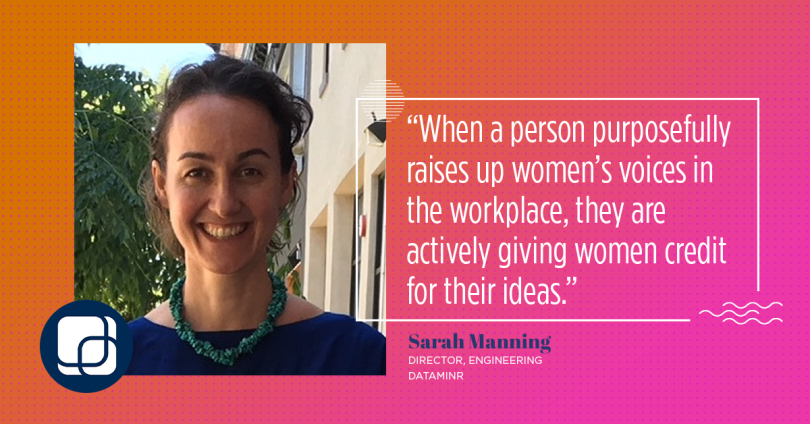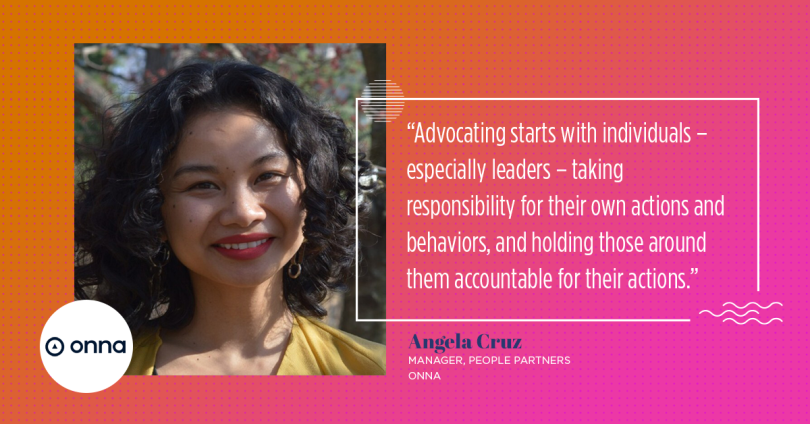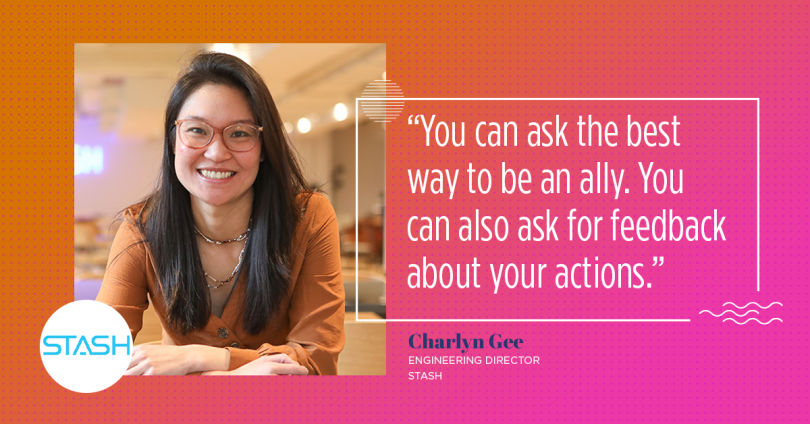
Creating spaces of equity for women in the workplace is long overdue.
Forty-two percent of women have experienced gender discrimination at work, according to Pew Research Center. Every year, a higher percentage of women are passed up over a position they applied for than men, even though they are equally qualified. And according to the U.S. Department of Labor, women still only earned 79 percent of their male counterparts in 2014 (it’s projected that salaries will not to bridge the gap until 2059).
This was all before the pandemic. Now, challenges have only further intensified.
Leaders in tech are starting to realize that in order to be a proper ally, it takes more than supporting women interpersonally. However, many employees are not sure where to begin translating allyship into work culture.
Taking a closer look at these NYC-based organizations is a good start. For example, at Memorial Sloan Kettering Cancer Center, Deputy CIO Janet Mak is actively encouraging her colleagues to apply for new roles, even if they may feel unqualified. According to Onna People Partners Manager Angela Cruz, it is important to recognize whose point of view is missing from a project and incorporate their perspectives. At Stash, Director of Engineering Charlyn Gee is building trust with colleagues individually to better understand their needs and how to support them the way they need most.
Finally, when in doubt, you can always simply ask women how to be a better ally directly.

Change the system
“‘Raise up women’s voices.’
I heard this phrase from my manager and my manager’s manager. It has made a significant difference for me in my own growth as an engineering leader. I like this phrase because it undergirds a lot of the other behaviors that are important for allyship with any non-dominant subpopulation that experiences exclusion and microaggressions in society. When a person purposefully raises up women’s voices in the workplace, they are actively giving women credit for their ideas. Leaders in organizations who consciously make room for women’s participation are signaling to members of diverse groups that ‘we want to raise you up.’ These leaders purposefully include women in a leadership council or a meeting agenda, and actively ask women for their opinions. Most importantly, they promote people identifying as female based on their potential.
If we consciously practice little behaviors on a daily basis, we’ll be part of the change. For example, be careful to not interrupt women when they are speaking, even if they pause in the middle of a sentence or speak in a more quiet voice; be careful to not repeat a woman’s idea as your own, give her credit instead (I promise it’s a good look); share in note-taking; shift your language from gendered ‘you guys’ to gender-neutral ‘folks’ or ‘y’all’; provide access to power by inviting women to a new leadership meeting; celebrate women’s wins; teach and reteach everyone about unconscious bias, and believe women’s stories. Raise them up.”
Sarah Manning is Director of Engineering at Dataminr, an artificial intelligence company.

Put on a public display of allyship
“I think that there are two ways to think about allyship — there’s personal allyship and public allyship. I see a lot of people being personal allies to the women in their lives – talking to them one on one, pumping them up, having deep conversations with them about their career and their struggles, and generally being open and empathetic to that woman’s point of view. Since personal allyship is certainly the more comfortable and common way of being an ally, I challenge people to practice public allyship – which is a lot harder.
Public allyship is pretty self explanatory; it means putting yourself out there as a vocal advocate in support of women. Actively make space for women in spaces that are male-dominated, proactively share your salary and how you were able to negotiate for higher pay, and call out sexist or misogynist remarks every single time. When I think of the people in my life who have practiced public allyship for me, I can say without a doubt that it is life-changing. I had no idea how many doors could be opened that I simply did not have the key to.”
Amber Lyon is a Senior Account Executive at Spring Health, a mental health benefits platform.

Small steps grow into bigger shifts
“Readily acknowledge women’s strengths and achievements, and just as importantly, draw other’s attention to women’s perspectives and contributions as well.
I am generally hesitant to speak up in group settings, and am guilty of downplaying my accomplishments and opinions – at times, omitting them entirely. Thankfully, my teammates actively make space for me in meetings to share my ideas by saying ‘Anna, I’d love to hear more of what you think about X.’ Additionally, when celebrating team milestones in more public forums, my manager identifies my contributions and the impact of those contributions very specifically. These gestures have helped me to build my confidence as an engineer over time.
Allyship starts with awareness and a commitment to constant learning and action. Anyone can take small steps like these in everyday meetings and conversations to become more effective allies for women, in and out of the workplace.”
Anna Concepcion is a Senior Frontend Engineer at Frame.io, a cloud-based media platform.

Encourage each other’s strengths
“Proactively seek and give opportunities to women in their everyday work life. This is especially powerful when you are in a leadership position. Be a sounding board or just someone to toss an idea around with. Sometimes a word of encouragement or opening a door slightly can make a big difference.
If you observe a fellow woman suffer a setback at work, jump in and offer support and encouragement. This can be something major such as losing out on a promotional opportunity or minor like giving a less-than-stellar presentation. Reach out to say, ‘I know you must be feeling bad, do you want to talk about it?’ and remind the person it is only one blip in a long career.
You see a management opportunity and you know the perfect woman for the job. Reach out and say, ‘I think you are the perfect candidate for this new management position, what do you think?’ On several occasions, when I reach out to do just that, the individual was agonizing over applying for the position because they lacked one-to-two requirements in the job description. That is when I offer encouragement and guidance, and point out all the other areas of strength they have that can compensate for what is missing. No one is the perfect candidate; they just need to be the best candidate.”
Janet Mak is Deputy CIO and Digital Solutions VP of Memorial Sloan Kettering Cancer Center, a healthtech organization.

Self-reflect
“Challenge your biases. A lot of times our preconceived notions about people impact how we treat them at work, whether we realize it or not. Since bias is essentially learned stereotypes, we often subconsciously assume someone isn’t equipped for a position simply because we haven’t seen many people that look like them in that position before. If we doubt someone’s ability or qualifications for a role, it can wreak havoc on a working relationship in ways that range from subtle to obvious. The goal is to recognize, acknowledge and challenge your biases in order to be proactive in ensuring you’re giving the same amount of opportunities, considerations and speaking time to women as men.
For example: Your company’s new CFO is a woman and wants to sit down with you to forecast your department’s numbers for the next quarter. You notice this feels uncomfortable because every budget discussion you’ve had in the past has been conducted with men. You’re unsure how much experience she has had with this, and feel tempted to walk her through the process first to ensure nothing goes wrong. Before the meeting, acknowledge the slight discomfort you feel and explore the reasons why. Consider her experience and position and briefly apply it to a man – is he qualified? Bring that perspective to your meeting.”
Maura Coyle is a Talent Acquisition and Development Lead at Canoe, a financial investment technology platform.

Think of it as an everyday practice
“Allyship includes understanding the intersectional experience and actively working to disrupt bias. I am a woman in tech, and I also happen to be Asian American. These are influential societal and cultural factors that affect how I interact with and am perceived by others at work.
While allyship can look different for each community, the important thing is to listen and be active in using the power of your privilege to confront the structures that get in the way of inclusion, equity and diversity. Meaningful action needs to integrate into day-to-day work life, not just after-hours program or a one-off learning experience.
We are taking a 360-degree audit of our processes that support women in the workplace, so that we can identify and implement change. When it comes to hiring, people often hire and promote people like themselves without thinking twice, which can hurt an organization’s diversity, equity and inclusion efforts. We’ve focused on using inclusive language in our job descriptions, improving our sourcing techniques, and enhancing our interview techniques to include underrepresented populations and appeal to candidates from different backgrounds.”
Heidi Wong is Senior Product Manager at GrubHub, a restaurant delivery platform.

Hold leaders accountable
“Amplify the voices of women and those from other marginalized groups and ensure their voices are being heard and respected. Being a good ally requires looking inwards and recognizing the opportunities, advantages and power you’ve automatically been granted, while being open and empathetic to others who are overtly denied those same privileges based on who they are.
Advocating starts with individuals, especially leaders, taking responsibility for their own actions and behaviors, and holding those around them accountable for their actions. Be present, proactive and aware. Deliberately seek that feedback from those in underrepresented groups and be actively aware of who is speaking in a group. Ask, ‘whose perspective are we missing?’ When you witness discrimination, don’t approach the person receiving it to offer empathy. Use the present as an opportunity to support them verbally, within the group, and in the moment.”
Angela Cruz is a People Partners Manager at Onna, an application search platform.

Foster a judgement-free zone
“Let women make their own career decisions without judgment or pressure. Instead, support them in achieving the goals they’ve set for themselves. If she’s pregnant or has children, don’t assume she doesn’t want to be part of the big, exciting, fast-moving project. If she’s single or has no kids, don’t assume she does want to be part of the big, exciting, fast-moving project. Ask her. If she says she’s not, ask what her goals are and work with her on making them happen.
Don’t assume she wants to go into management even if you think she’d be good at it. Ask if she’d rather go into management or be an individual contributor. If she’s not on the people leadership track, ask what her goals are and do your best to find opportunities that align with those goals. Don’t assume she doesn’t want to go into management even if she’s reserved. Quiet leaders are some of the best ones, so ask what her career intentions are.
In essence, avoid assumptions based on personal life or perceived interests. Start a conversation about goals and support her efforts in achieving them!”
Sarah Wooten is a Software Engineer at MaestroQA, a customer support software company.

Make space for opportunity
“Something we can do for anyone, regardless of who they are, is to know them and advocate for them. Advocate for them when they’re in the room as well as when they aren’t.
Get to know us as individuals and ask how you can help. Invite us to the spaces where decisions are made. Make sure we have opportunities to speak. Recognize when you or others are referencing something we said and say, ‘as mentioned earlier....’ Give us credit when we do good work. Help make it safe for us to give honest feedback. Be curious about what we have to say.”
Eileen Ani is a Product Design Manager at DigitalOcean, a cloud system for developers.

Pass the mic
“Listen with the intent to understand and not with the intent to respond or react. Often, when women speak up to offer perspective or an idea, it is met with confrontational lines of questioning or people repeating exactly what she said as their own idea. When that opinion is different from others, she may be labeled as emotional or difficult. The anticipation of this prevents a lot of women who may have something important to contribute from speaking up to avoid feeling attacked or unheard. Women need to feel empowered to speak in a non-confrontational environment where they are given the opportunity to question and debate without being labeled.
Amplify women. Give credit. Do not make assumptions. Tech is a male-dominated industry so often there are assumptions made about a women’s knowledge level. Trust the women in your organization. Do not use women for emotional support. Often women are expected to provide emotional labor in addition to their day-to-day responsibilities. Employees may be more likely to go to a male colleague for technical or strategic conversations. Women should be included in these conversations and not relied upon to provide emotional support to colleagues.
It’s important that women support each other by openly celebrating the successes of their female colleagues, offering encouragement and advice, or just reaching out to other women in the organization to check in and see how things are going.”
Angelique Stewart is VP of Client Support at Zipari, a consumer-based health insurance platform.

Break the bias pattern
“I thought about all the times I’ve felt supported and seen, and I realized – each time was unique, different and personal. There’s no one right way to be a good ally. It’s important to build trust with and get to know women at work as individuals, so you can support them the way they need most. In a recent allyship workshop at Stash, one prominent theme was ‘ask, don’t assume.’ You can ask the best way to be an ally. You can also ask for feedback about your actions.
A good ally takes action again and again. For instance, if a team member is frustrated that she always has to take notes, volunteering to take notes is helpful. But once is not enough to break a biased pattern. An ally needs to volunteer repeatedly. Even better, a good ally can help create a better pattern, like a rotation for notetaker.
One frequent challenge for me has been getting enough inclusion to have full responsibility for my work. It’s important to redirect her work to her – whether it’s questions about, credit/recognition or even criticism.
If you ask me about my best allies, I really appreciate people who help me avoid self-sabotage due to insecurity. For example, the manager who invited me to present my work even though I didn’t like public speaking, or the direct report who reassured me that it didn’t matter if maybe I got selected for a special training program because of my gender, as long as I brought back the learnings to help our team. Other great allies regularly back me up in public settings. Sometimes this is as simple as saying ‘she’s right.’
One example I saw recently: a woman engineer did some work but was out sick for the demonstration. Her teammate showed the work, and he explained that ‘[Jane] did this work.’ Afterward, her teammate got praised for the cool work he had demonstrated. He started getting questions about implementation details. In these cases, he can be a good ally by redirecting praise and questions to her.”
Charlyn Gee is the Director of Engineering at Stash, a personal finance platform.





